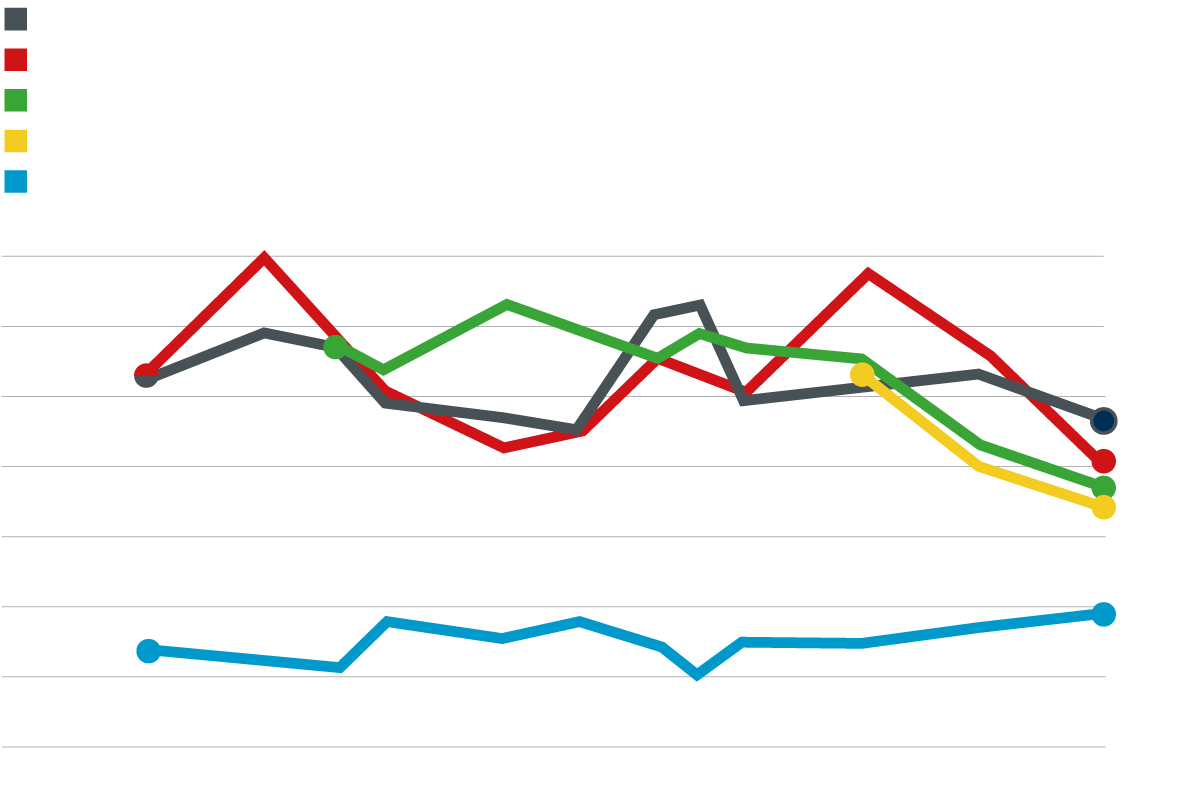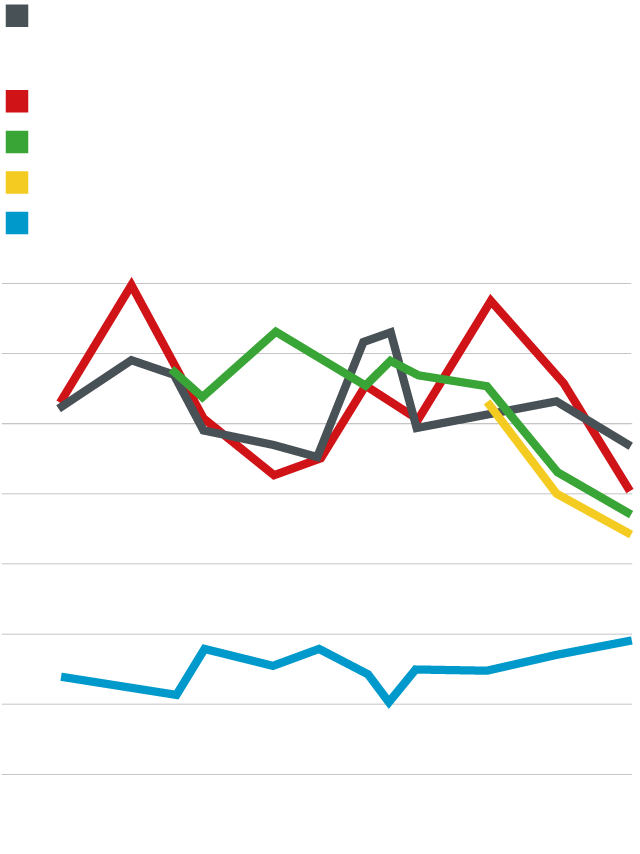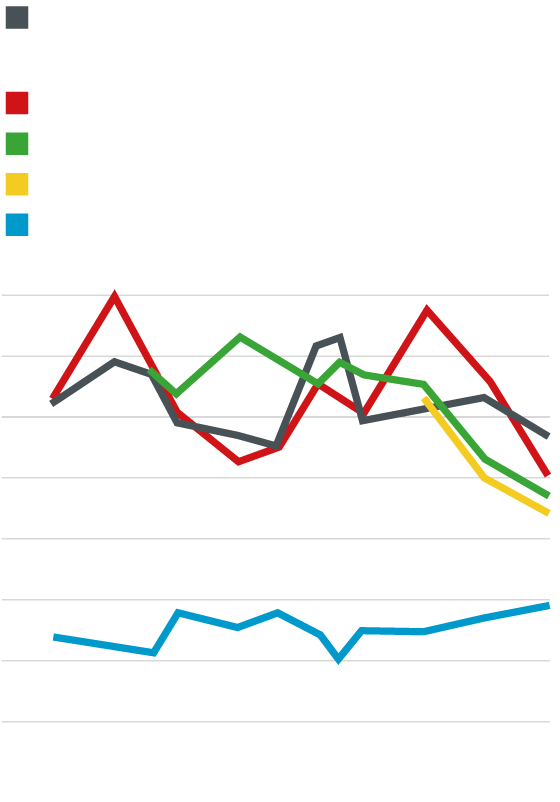10 worrying facts about Germany
The country has suffered an economic slowdown while the political system is more fragmented than ever.


BarcelonaGermany has historically been the political and economic engine of Europe. But in recent years there has been a growing feeling that the former spearhead of the Old Continent has regressed economically and could also regress in the democratic sphere. But is this really the case? What do the data say? We review the evolution of the socioeconomic indicators of the Federal Statistical Office, Destatis, and other sources in the last decade.
GDP
Looking at the past decade, Germany's GDP peaked in 2017, when it grew by 2.7%. With the pandemic, it fell by 4.1% in 2020, but recovered relatively in 2021. However, 2023 ended in recession, with three consecutive quarters of decline. And in 2024, the German economy declined again. If we exclude the Covid period, this is the first time that German GDP has fallen for two consecutive years since 2003.
Inflation
Prices for all kinds of products have risen sharply in recent years, mainly due to the dependence on Russian gas in the industrial sector and sanctions resulting from the war in Ukraine.
Wages
The average German salary has risen from 3,612 euros gross in 2015 to 4,634 euros by mid-2024. This is an increase of 28.3% in nominal terms, i.e. without taking into account the impact of inflation. However, if inflation is taken into account, the increase is only 1.64%, meaning that the purchasing power of Germans has not increased significantly over the past decade.
Housing
The rental price for a new-build apartment in 2015 was 8.51 euros per square metre, while the price for second-hand homes was 6.96 euros per square metre, according to Statista. By the end of 2023, prices had risen to 11.87 and 9.83 euros respectively. In other words, in both cases they have risen by around 40%, without taking inflation into account.
Energy
The average German has the highest electricity bill in the entire European Union, at almost €0.40 per kWh. Without taxes, the price has risen from €0.13 in 2017 to €0.28 in 2024, a figure that represents an increase of 115%.
Risk of poverty
If we look at the percentage, there are now fewer Germans living at risk of poverty and social exclusion than 10 years ago. In fact, that figure has dropped from 16.7% to 15.5%. But in the meantime, this rate had been reduced and fell to 14.8% in 2019, meaning that it has actually registered growth over the past 5 years.
Demographics
The average German is also older than a decade ago. The working-age population has fallen by 3 percentage points (66-63%) since 2015, and although immigration is increasing, the birth rate is falling. In 2015, the average woman had 1.50 children, while in 2024 the average was 1.35.
Immigration
German society is now much more diverse than a decade ago. Of the 83 million citizens, 14.1 million are of foreign origin, another 5 million more than a decade ago. The number of asylum seekers has also grown and now stands at 3 million. In 2015 and 2016, Germany received more than a million asylum applications due to Merkel's Syrian reception policy. And although the pace has since slowed, asylum applications in 2022 almost doubled compared to the previous year.
Thought
Ideologically, the average German has also become radicalized. According to one survey of the popular think tank According to the Pew Research Center, in 2024, 19% of Germans had a favourable view of the far-right Alternative for Germany (AfD), while five years ago only 14% of the population had a favourable view. In contrast, traditional parties have lost popularity. Chancellor Olaf Scholz's Social Democratic Party (SPD), for example, has suffered a very considerable drop, going from 67% in 2022 to 39% at the time of the survey. The CDU has also lost 6 points of popularity compared to 2016, while the liberal FDP has fallen by almost 20 points in just one term.
Political parties
The party scene in Germany is more fragmented than ever. The traditional parties (CDU and SPD) have never been so weak, while new players such as Die Linke, FDP, AfD or the recent BSW have emerged and established themselves in just one decade. AfD entered the Bundestag for the first time in 2017 with 94 seats, and 11.5% of the vote. However, in the next election in 2021 it only won 84, or 10.2%. Polls now predict it will get 22%.



